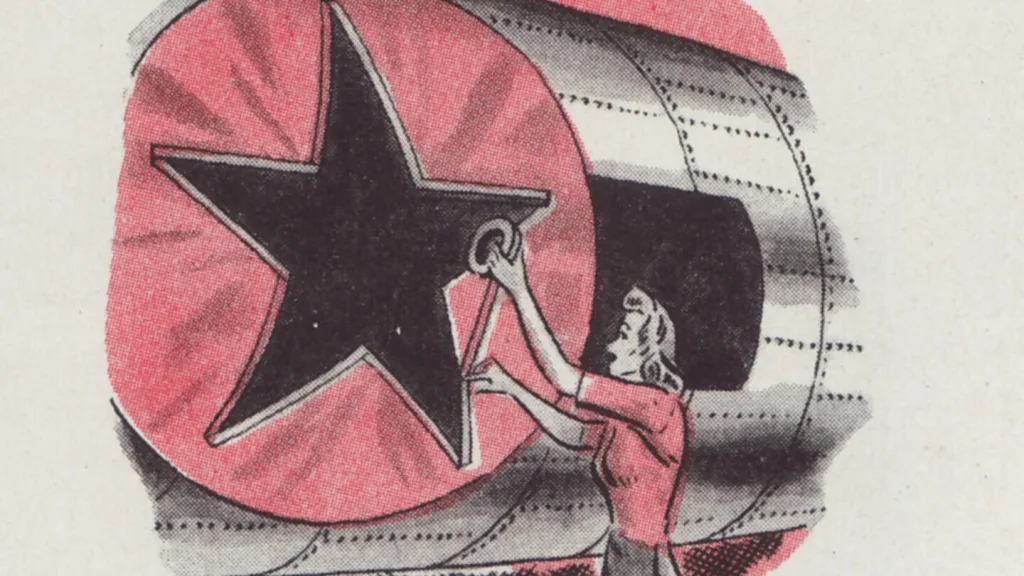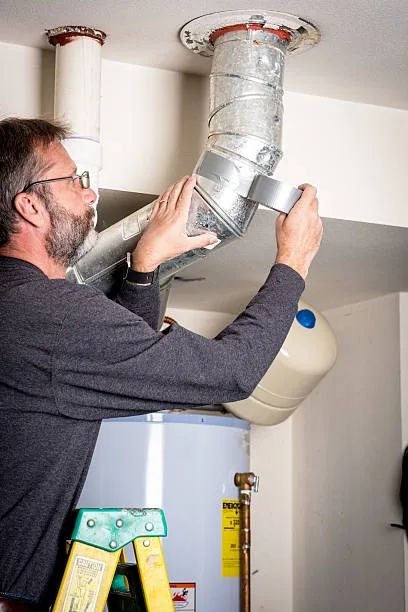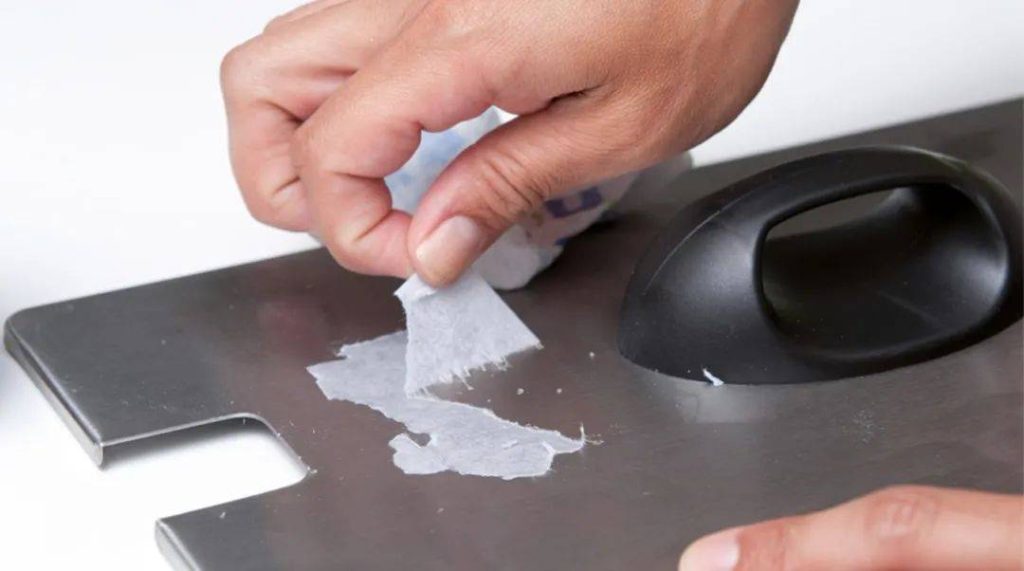The History of Duct Tape
Duct tape’s journey began during World War II. In 1942, a woman named Vesta Stoudt, working in a munitions factory, invented a durable tape to seal ammunition cases. She believed that a waterproof, strong tape would be essential for soldiers in the field. However, it wasn’t until the war ended that a manufacturer, Johnson & Johnson, began producing it.
Originally known as “duck tape” because it was made from a cotton duck or cloth material, it was later renamed “duct tape” when it found its way into the HVAC industry. Contractors began using it to seal air ducts due to its durability and adhesive strength. By the 1960s, duct tape had transformed into a multitasking tool, embraced not only by professionals but by DIYers everywhere. Its popularity soared with the rise of home improvement culture, reinforcing its status as the ultimate problem-solving tape.

How Does Duct Tape Work?
Duct tape consists of a polyethylene film or cloth backing coated with an aggressive adhesive. This unique combination allows it to bond effectively to a multitude of surfaces. When you apply duct tape, the adhesive forms a strong bond with the surface material, thanks to its high tackiness and exceptional grip.
The tape’s flexibility also contributes to its performance. Users can stretch or conform the tape to fit uneven or awkward surfaces, ensuring a reliable bond.
What Are the Advantages of Duct Tape?
Duct tape is not just versatile; it offers numerous advantages that make it an invaluable tool.
Strength and Durability
Duct tape’s heavy-duty adhesive strength enables it to hold up to weight and pressure. Many brands report that it can support up to 60 pounds per inch of tape, making it ideal for repairs or temporary fixes.

Versatility
From sealing pipes and repairing furniture to creative projects and crafting, duct tape adapts to a myriad of uses. DIY enthusiasts often keep multiple rolls in various colors for their home projects.
Water and Heat Resistance
High-quality duct tape, especially foil duct tape, is resistant to moisture and can withstand some exposure to heat. This makes it suitable for outdoor and high-temperature applications, such as repair work in mechanical environments.
Easy Application
The robust adhesive allows duct tape to adhere quickly to most surfaces. Users appreciate how it tears easily by hand, eliminating the need for scissors in urgent situations.
Can Duct Tape Be Used as Electrical Tape?
While some people may be tempted to use duct tape for electrical applications, it’s essential to note that it is not recommended. Duct tape does not have the necessary insulation properties required for electrical work. Instead, use dedicated electrical tape, designed to withstand high voltage and heat.
Six Variations of Duct Tape
Duct tape comes in an array of variations tailored for specific needs. Understanding these types can help you choose the right tape for your project.
General Purpose Duct Tape
This standard tape is perfect for everyday uses, such as household repairs and crafting projects. It generally features a strong adhesive and can handle moderate workloads.
Industrial Grade Duct Tape
For heavy-duty tasks, industrial-grade duct tape offers enhanced adhesion and durability. Available in multiple colors, it is ideal for commercial and construction applications where demands are higher.
Heavy-Duty Duct Tape
As the name suggests, heavy-duty duct tape is thicker and more robust than standard tape. It is perfect for extreme conditions, including outdoor applications or repairs that need to withstand significant pressure.

Gaffer Tape
Similar to duct tape in its strength, gaffer tape is often used in film and theater productions. Its non-reflective surface makes it preferred for ensuring a clean appearance on stage, though it cannot match duct tape’s overall versatility.
Stucco Tape
This specialized duct tape is textured to adhere better to rough surfaces like stucco. It’s specifically designed for outdoor use, ensuring durability in challenging environments.
Coated Cloth Tape
Coated cloth tape features a fabric backing and a strong adhesive that makes it suitable for applications requiring flexibility and durability, like HVAC repairs.
Nine Things that Compromise the Performance of Duct Tape
Despite its many advantages, several factors can undermine duct tape’s performance. Here are some conditions that could affect its adhesion:
Wet Surface
Applying duct tape to wet surfaces reduces adhesive effectiveness significantly. The moisture creates a barrier that prevents proper bonding, and the tape may peel off within hours or days. This is particularly problematic in outdoor settings, where rain can cause unexpected failures in adhesion. For best results, surfaces should be dry and free from moisture before applying duct tape.
Hot Surface
Duct tape can lose its adhesion on hot surfaces, especially when exposed to temperatures above 200°F (93°C). High temperatures soften the adhesive, rendering it less effective and prone to failure. This is important in situations like automotive repairs, where components that endure heat may require specialized high-temperature tape instead of standard duct tape.
Cold Surface
Extreme cold can make duct tape stiff and less sticky, compromising its ability to hold effectively. When temperatures drop below 32°F (0°C), the adhesive can become brittle and lose its grip. This can lead to tape failure in applications like outdoor repairs during winter or when storing items in unheated garages.
Surface with Prolonged Exposure to UV
Sunlight can degrade the adhesive properties of duct tape over time. Prolonged exposure to UV rays breaks down the chemical structure of the adhesive, leading to a loss of tackiness and eventual failure. For outdoor applications, it’s advisable to use UV-resistant duct tapes that are specifically designed to withstand sun exposure without degrading.

Uneven Surface
Duct tape requires a consistent surface for effective adhesion. Uneven or bumpy surfaces can lead to weak or partial bonds, which may result in the tape pulling away over time. For optimal adhesion, smoothing out any irregularities on the surface before application is crucial, especially for projects like patching up walls or securing items.
Dirty Surface
Dust, dirt, or grease can seriously interfere with adhesive bonding. Contaminants create a layer that blocks the tape’s adhesive from making direct contact with the surface, which weakens the bond. To ensure a strong hold, always clean surfaces before application using a suitable cleaner and allow them to dry completely.
Corrugated Cardboard
While duct tape adheres decently to smooth surfaces, its grip on corrugated cardboard can be unpredictable due to thickness variations. The gaps in the corrugated texture can trap air and prevent a complete bond, leading to a shorter lifespan for the tape. For securing or repairing cardboard, it’s best to use tape specifically designed for that material or apply additional layers to increase adhesion.
Materials with Low Surface Energy
Certain materials, like polyethylene or Teflon, inherently resist adhesive bonds due to their low surface energy. Duct tape struggles to adhere to these surfaces, resulting in weak connections that may fail under stress or over time. In cases where adhesion to low-energy surfaces is necessary, consider using specialized adhesives or tapes designed for those materials.
Painted Surfaces
Painted surfaces can be tricky for duct tape application. Some paints contain additives or finishes that react negatively to the adhesive, leading to poor adhesion or peeling when the tape is removed. It’s wise to test a small area first or choose to apply duct tape to unpainted substrates to avoid damaging surfaces. To improve bonding, ensure that the paint is fully cured and that the surface is clean and dry.
Conclusion
In conclusion, duct tape is a powerful and versatile tool that has stood the test of time. From its fascinating historical roots to its wide array of applications today, understanding how duct tape works and its various advantages equips you for tackling any project.
At Fonitaniya Tape Company, we’re proud to be an adhesive solution provider with over 15 years of experience. Our commitment to innovation drives us to create high-quality duct tape products that exceed industry standards and meet the evolving needs of our customers. Discover how our duct tape can help you with your next project!
FAQs
What is duct tape good for?
Duct tape is great for repairs, crafting, and even temporary fixes.
Is duct tape waterproof?
Duct tape is water-resistant but not completely waterproof.
How strong is duct tape?
Duct tape can support up to 60 pounds per inch when applied correctly.
Can duct tape be used on wet surfaces?
No, duct tape cannot bond effectively to wet surfaces.
What are the different types of duct tape?
Types include general purpose, industrial grade, heavy-duty, gaffer tape, stucco tape, and coated cloth tape.




